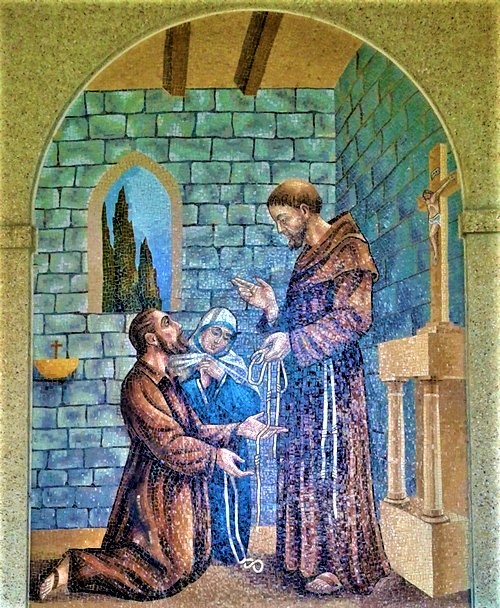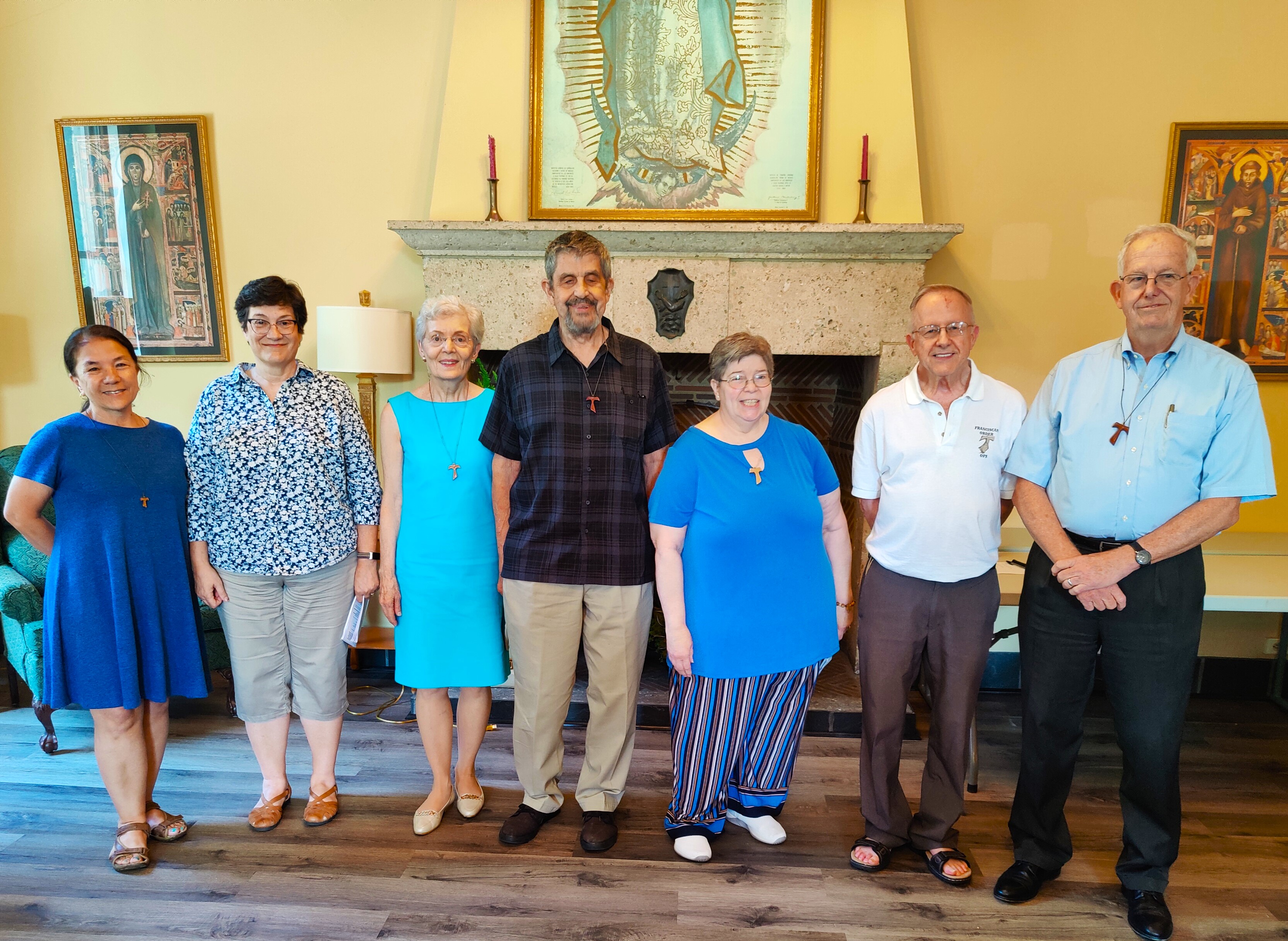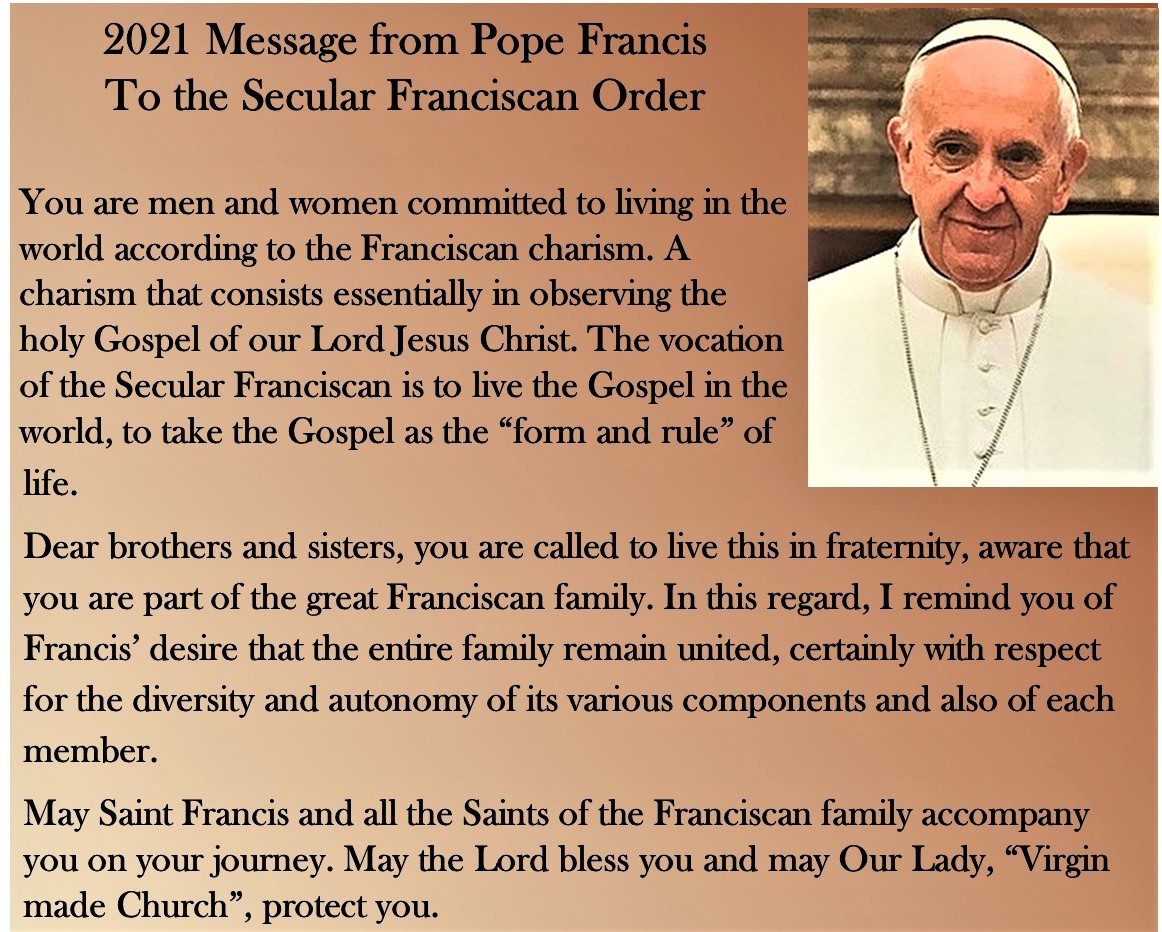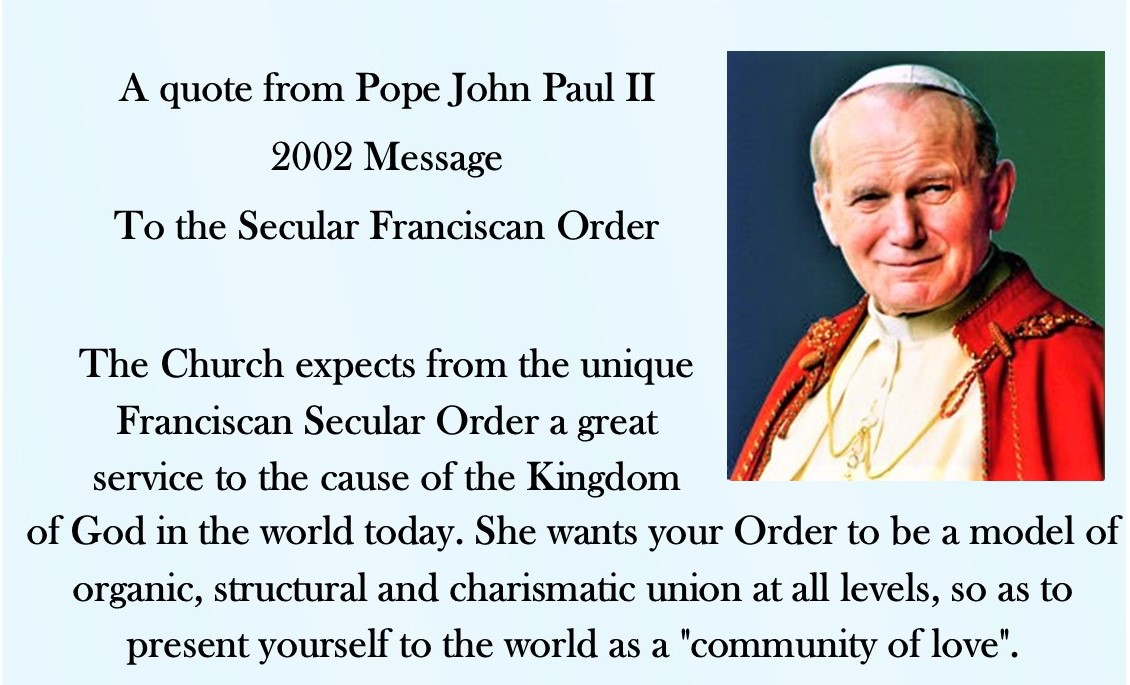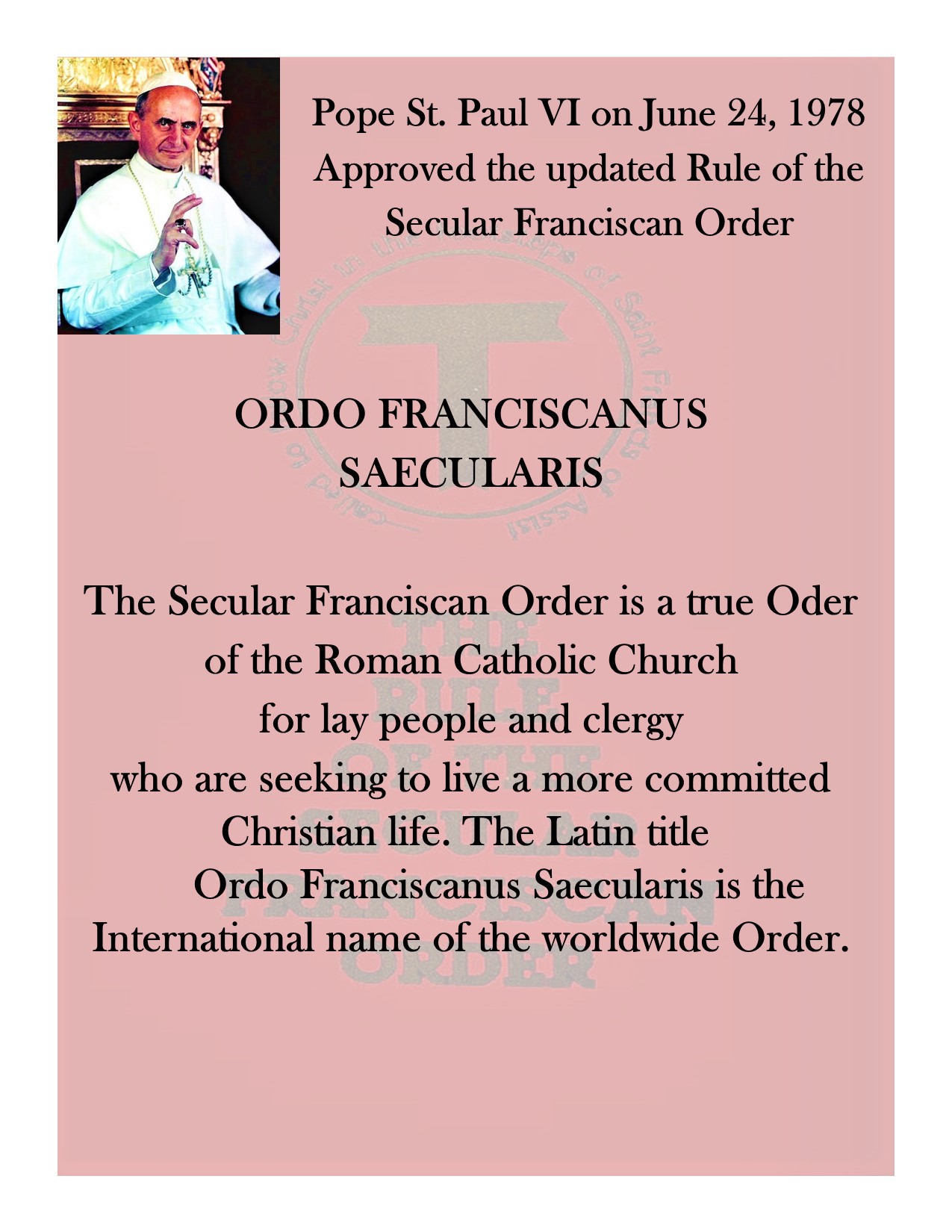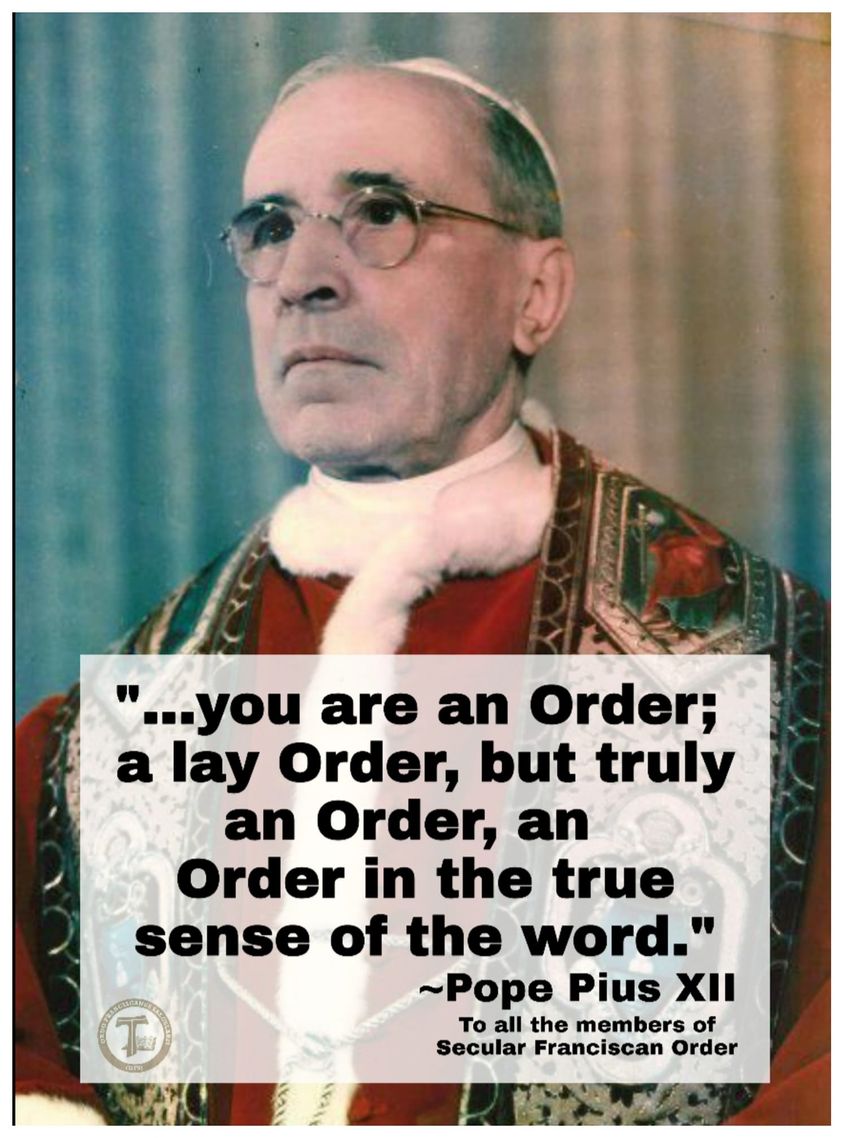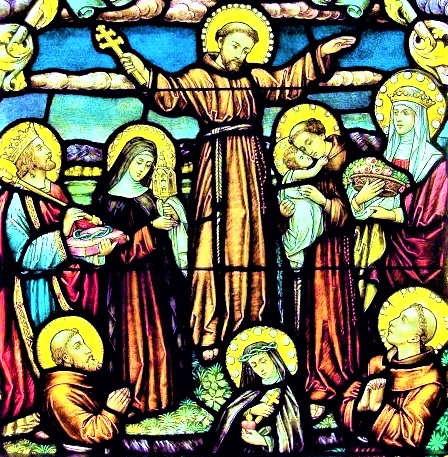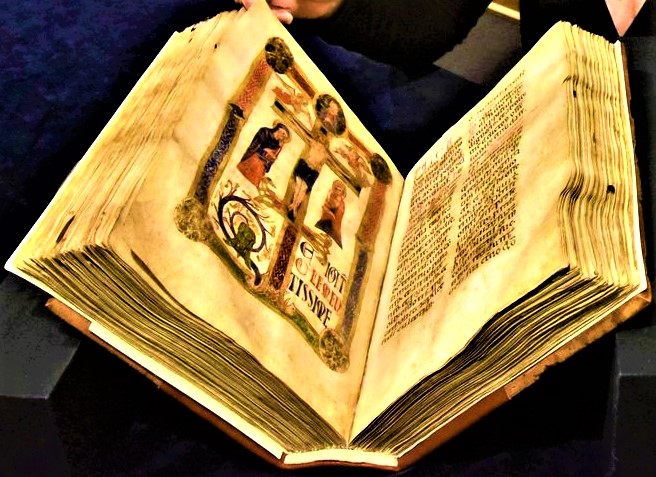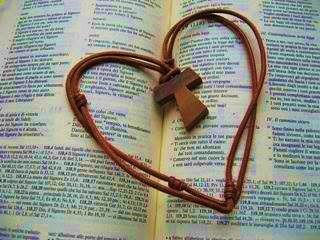The Missal used by St. Francis during his life
**************************************************
What is the Liturgy of the Hours?
The Liturgy of the Hours, which is the public and common prayer of the Church, is the prayer of Christ with his body, the Church. Through the Liturgy of the Hours the mystery of Christ, which we celebrate in the Eucharist, sanctifies and transforms the whole of each day. It is composed mainly of psalms, other biblical texts, and readings from the Fathers and spiritual masters. —From the Compendium of the Catechism of the Catholic
To purchase the Liturgy of the Hours: Shrine of St. Anthony in Ellicott City, MD or to order:
**************************************************
Breviary on the Web
**************************************************
RUBRICS 4.1.2000
(For the Liturgy of the Hours)
**************************************************
Daily Mass Readings and Meditations for the Day
**************************************************
Franciscan Crown Rosary
(The Seven Joys of Mary)
**************************************************
What is Franciscan Prayer?
We know that neither Clare nor Francis offered a complicated prayer method. They call their followers to prayer with a decidedly contemplative dimension – to be present to God who is present to all creatures is prayer. Our prayer is always addressed to God in the Son by the power of the Spirit…Our prayer is to be Incarnational. We become alive to God’s deeds in the greatest gift of God, the Incarnation, in which God becomes one with us in the Son. The purpose of all Franciscan prayer, then, is to give God ceaseless praise and thanksgiving for all God has done and does in creation and in our re-creation in Christ.
Prayer is a way of life for us – all the time and everywhere. We should be so filled with God that adoration flows from the depth of our inner life … with joy and thanksgiving. … This is the holiness to which we are called. Our every day should thus be sanctified. In Francis’ time, this sanctification of the day was given clear expression in the divine office. This is still the Church’s understanding of the Liturgy of the Hours. We pray with the Son in his Mystical Body celebrating God’s gift of salvation throughout the day. … Francis, praying the Office is also a sign of fidelity to the Church’s tradition of daily praise and intercession.
[In the Rule], the motivation for our life of ceaseless prayer is described. … The created world is the expression of God’s goodness and the theater of God’s redemptive love for us. Because we are made in God’s image, it is possible for us to seek union with God as we do God’s will. Thus, the Franciscan does not flee the world in order to ‘escape’ to God but seeks immersion in its sacramental reality. – From: Margaret Carney, OSF – Franciscan Morning and Evening Praise
**************************************************
Franciscan Blessing
May the Lord bless and keep us,
May his face shine upon us and be gracious to us,
May the Lord look upon us with kindness and give us his peace
May the Lord bless us, in the name of the Father and of the Son and of the Holy Spirit – Amen
**************************************************
The San Damiano Crucifix
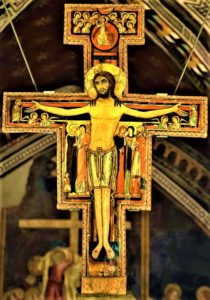
Toward the end of the year 1205 as Saint Francis was praying before the painted crucifix in the Church of San Damiano he heard these words: “Francis, go and repair my house which, as you see, is falling completely to ruin.” Within recent years we have seen many pictures of this crucifix upon which Francis was gazing when he heard this command from Christ.
As we actually look upon a picture of the San Damiano crucifix we see more of a glorified Christ than we do of a suffering Christ. We also notice many other persons included in the picture.
In the painting by Christ’s right side, we see Mary, Our Lord’s Mother, and John, the beloved disciple; by his left side, we see Mary Magdalene and Mary, wife of Cleopas and the Roman centurion (who attests with his right hand the divinity of Christ). On the lower left side of the painting, we see Longinus (the soldier who pierced the side of Jesus) and on the lower right side of the painting, we see Stephen (the guard of the temple, who offered Jesus the sponge soaked in vinegar). Behind Our Lord’s outstretched arms we see the tomb represented. Four angels, two on each side beneath the outstretched arms of Christ, seem to be discussing the significance of the mysteries depicted and are being purified by the Blood of Christ (as is John and the other persons in the painting). Two other angels, one on the right and the other on the left may be attesting to the empty tomb. Some speculate that these two figures represent the women who arrived at the tomb on Easter morning. Below the feet of Christ, there seem to be six figures. The two on the right seem to be Saints Peter (observe the rooster) and Paul. Probably the other four persons included in the painting would be Saints Damian (the Patron of the Church), Rufinus (The Patron of the Cathedral in Assisi), Michael and John the Baptist.
We also observe the halo of glory on this triumphant cross instead of the crown of thorns, the inscription “IHS Nazare Rex Judeorum,” the Ascending Christ above the inscription (notice the index finger on the right hand), the “welcoming” hand of the Father, and the ten angels or saints in union with the resurrected Christ.
**************************************************
History of the Portiuncula Indulgence
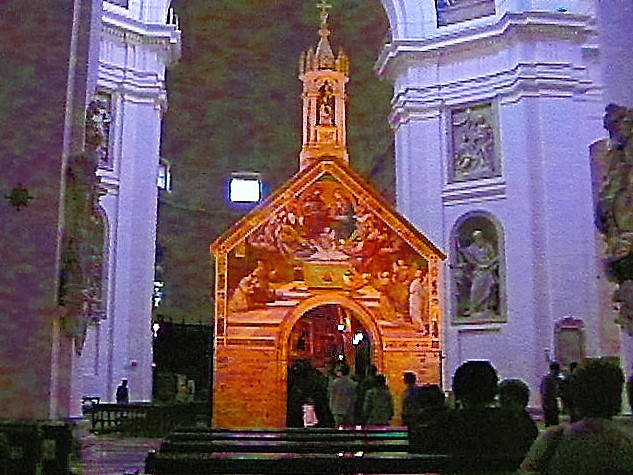
**************************************************
The Goal of Prayer – “We become what we love and who we love shapes what we become. If we love things, we become a thing. If we love nothing, we become nothing. Imitation is not a literal mimicking of Christ; rather, it means becoming the image of the beloved, an image disclosed through transformation. The goal of prayer, therefore, is to be transformed into the image of the crucified Spouse. This means we are to become vessels of God’s compassionate love for others.” ~ Ilia Delio, Franciscan Prayer
**************************************************
